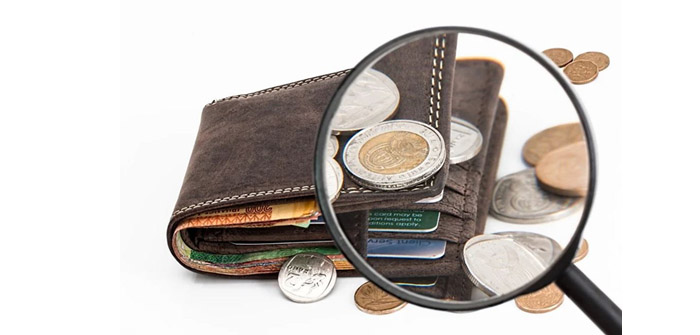Money counters are designed to detect fake tender utilizing several different approaches so that nothing slips through their system. The most popular methods apply tests by checking watermarks, magnetic ink, paper size, UV light strips, microprint, security threads, and paper quality. With these approaches, money counters can promptly identify fake bills using a combination of these tactics.
How Counterfeit Money is Detected by Money Counters
Money counters typically have built-in detection systems that allow them to pick up bills that are fake. Not all money counters use the same methods, so you may see only a handful of approaches being used in each machine.
Microprinting Counterfeit Detection
Every dollar bill has tiny lettering that is hard to see with the naked eye. The letters are microprint codes that can only be found in real currency. A magnifying glass is required to be able to make the microprint legible. Money counters have a scanner that can check to see if the microprint is accurate.
Watermark Identification
After the year 2004, watermarks have been incorporated into bills. They can be seen from both sides of the bill by shining a light through the bill or holding it up to the light. The watermark itself is typically a smaller image of the face on the dollar or select words found on the dollar bill.
Size and Weight Match
Every bill has a specific size and weight. Counterfeit money is often inconsistent, both in its dimensions and heaviness. Real bills made by the treasury are always exact and rarely if ever, have any processing errors. If a bill is too heavy or too thin due to the material being used by the counterfeiters, the money counter will automatically detect the difference.
Magnetic and Color Ink
All bills have magnetic ink on them, which can be picked up by counterfeit machines. The bill also has inks that shift in color, making them difficult to replicate. Bills after 2004 that have the denominator $10 and more have a numeral that is located in the lower right corner in color-shifting ink. If the ink doesn’t have a rainbow effect under a light, then it is likely counterfeit.
Security Threads
Bills are created with security threads that are embedded into the surface. They are very threadlike and intricate and are found in bills of $5 that were made after 2004. The threads are made visible when light is shown on them and found in vertical lines on the bill. For every bill denomination, there is a different security thread color.
Paper Fabric
The paper material used for the bill is typically made with 75% cotton and also 25% linen. The fabric of the bill is woven with blue and red fibers.
UV Light
The security threads on the bills will glow when ultraviolet light is shown on the bill. Each type of bill and denomination have a different color. This way, if a counterfeit bill has the denomination of $100 but doesn’t glow pink, then it is counterfeit money.
Learn More About Counterfeit Detection
If you would like to find out more information on how counterfeit money is detected, you can click accubanker.com to learn more. There’s a multitude of ways that counterfeit bills are discovered through the use of innovative technology.
https://www.secretservice.gov/investigation/counterfeit
https://cdn.pixabay.com/photo/2017/05/07/13/27/wallet-2292428_960_720.jpg




